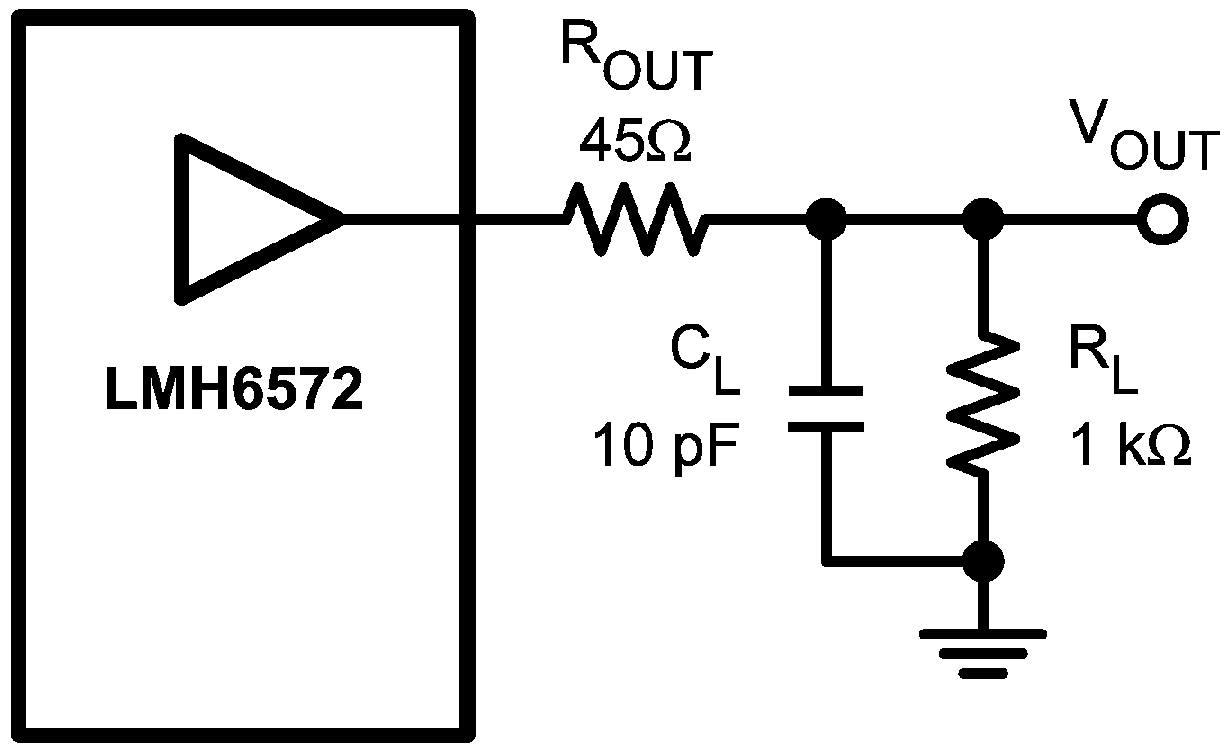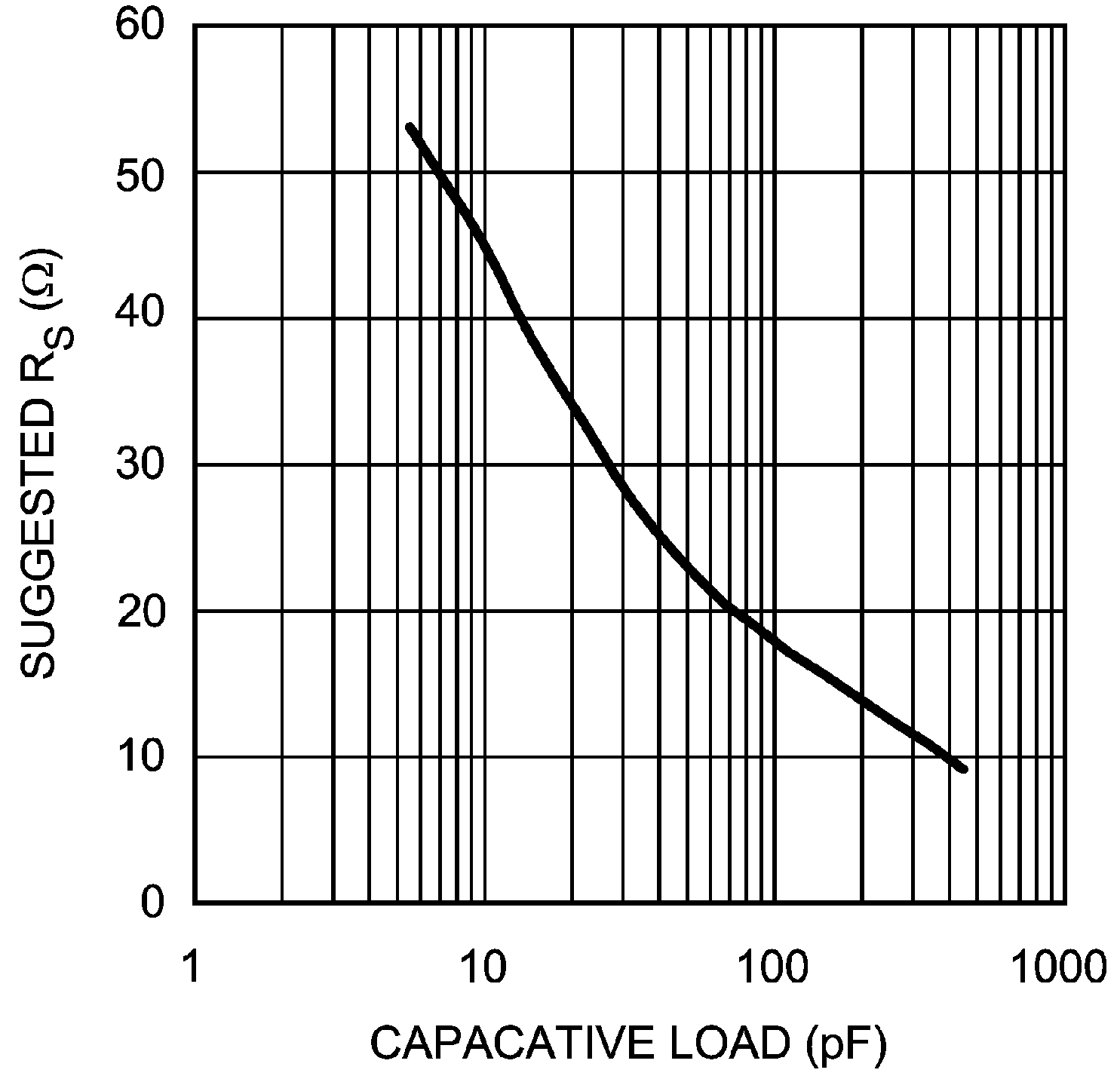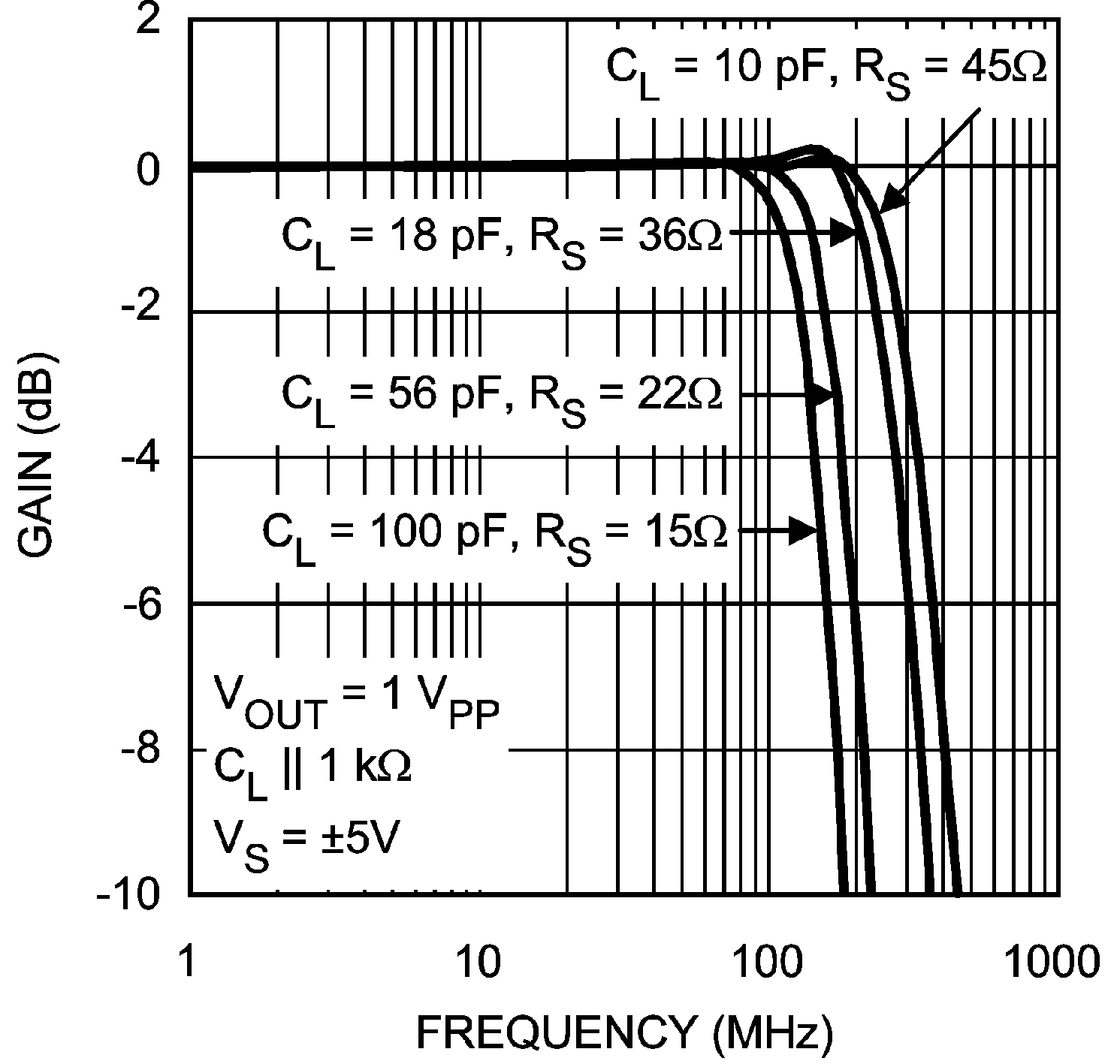ZHCSIP3G June 2005 – August 2018 LMH6572
PRODUCTION DATA.
7.2.5.1 Driving Capacitive Loads
Capacitive output loading applications will benefit from the use of a series output resistor. Figure 23 shows the use of a series output resistor, ROUT, to stabilize the amplifier output under capacitive loading. Capacitive loads of 5 to 120 pF are the most critical, causing ringing, frequency response peaking and possible oscillation. Figure 24 gives a recommended value for selecting a series output resistor for mitigating capacitive loads. The values suggested in the charts are selected for .5 dB or less of peaking in the frequency response. This gives a good compromise between settling time and bandwidth. For applications where maximum frequency response is needed and some peaking is tolerable, the value of ROUT can be reduced slightly from the recommended values.
 Figure 23. Decoupling Capacitive Loads
Figure 23. Decoupling Capacitive Loads  Figure 24. Recommended ROUT vs Capacitive Load
Figure 24. Recommended ROUT vs Capacitive Load  Figure 25. Frequency Response vs Capacitive Load
Figure 25. Frequency Response vs Capacitive Load